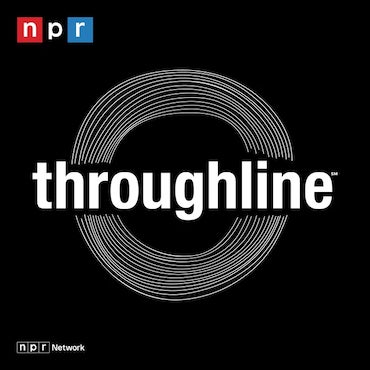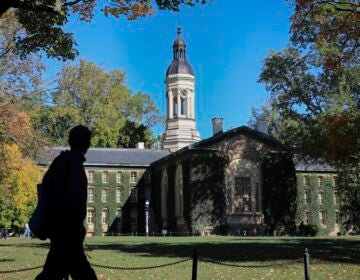Students leaving Philly schools for charters less costly than once thought
ListenA long-awaited study of the true costs of charter students in Philadelphia says that much of the “stranded costs” associated with charter growth could be eliminated if Philly closed more schools.
When charter schools expand, and more kids leave classrooms run by the School District of Philadelphia, it’s not as costly as previously estimated, although the total remains significant.
That’s according to a much-anticipated report commissioned by the district in 2015, completed by the consultancy Afton Partners, and obtained recently by NewsWorks/WHYY through a right-to-know request.
The new report estimates that each additional charter pupil sets back Philly’s public system by $4,824. For years, the district has estimated the cost at $7,000 per new seat.
The report also concludes that much of the financial burden created by charter expansion could be eliminated if the district aggressively closed traditional public schools that have a lot of empty seats.
The new analysis found that, by 2023, charter growth will create inefficiencies that cost the district $56 million annually, or about 5 percent of its total budget. If, however, the district closed schools where half the seats are empty, it could reduce the annual hit by $33 million. That would require an aggressive campaign of school consolidation that could reduce these costs by 58 percent, bringing them down to about $2,842 per seat.
In all, the analysis found that 4 percent of district costs are truly fixed. The other 96 percent are either variable or semi-variable, meaning they don’t reduce “proportionately with changes in enrollment” but can be changed over time.
Both supporters and critics of charters will see positives in the new report.
Pro-charter advocates have long argued that the district’s old estimate was inflated and that, in general, their political adversaries overstate the financial detriment charters cause. The Afton report does suggest the old estimates were high, but it stops well short of suggesting the burdens are negligible. Perhaps more importantly, though, it suggests the district could be doing more to ease the duplicated costs associated with charter growth.
“For a long time these so-called stranded costs have been characterized as inevitable,” said Mike Wang, director of Philadelphia School Advocacy Partners, a pro-charter lobbying group. “The fact is these costs can almost entirely be reduced or eliminated, but doing so requires the district to make what the report characterizes as tough political decisions.”
For charter skeptics, the new analysis weakens — without negating — their argument that charter expansion strangles district finances. The Afton estimate of $4,824 per new charter seat does not take into account the district’s debt service payments. If debt service were included, Afton found, the average cost would rise to $6,898 per seat — a figure remarkably similar to the one Philadelphia has long cited.
“This confirms what we have known for a while, and it confirms it from a second expert source,” said Donna Cooper, executive director of the nonprofit Public Citizens for Children and Youth. “Some charter school advocates have said that stranded costs are in the one- or two-thousand range. What this does is really blow the lid open.”
What are ‘stranded costs,’ and why do they matter?
This new analysis touches on a topic that has become central to the school choice conversation in charter-dense cities such as Philadelphia.
At issue here is something called “stranded costs,” a wonky term that describes the fiscal hit traditional school districts face when a student enrolls at a charter school.
When a charter school opens in Philadelphia, the school district must pass along the per-student cost of educating each child that enrolls. Theoretically, that shouldn’t be a problem. After all, the school district no longer has to pay to educate the children now attending the new charter school. That means fewer school lunches to purchase, fewer school supplies to provide, and a host of other reduced costs.
But in the real world, this transfer from district to charter is quite messy.
Consider the case of a kid who ditches a district-run school for a charter. That child leaves behind a school building that must still be heated, a principal who must still earn a salary, and a central administration that must still perform all of its supervisory tasks.
This is all very logical, but it doesn’t address the main concern: Just how expensive are these stranded costs? Do they drive the district’s long-term budget deficit (estimated to reach $583 million by fiscal year 2021)?
Charter opponents often say yes, the accumulation of these stranded costs imperils a district already in distress.
Charter advocates often say no, the costs should eventually even out as the district consolidates low-enrollment schools and lays off superfluous administrators.
The district’s School Reform Commission and the district itself, meanwhile, seem to be taking the Afton analysis as confirmation of what it’s long assumed: Charter growth adds meaningful costs to the district’s ledger.
“This report reaffirms much of what we knew about stranded costs and it highlights the complexities and constraints of operating in a large urban school district, with a charter law that needs real reform,” said Joyce Wilkerson, chair of the SRC, in a statement. “We need a charter law that allows the School District of Philadelphia to operate a logical school system that focuses on quality public education and puts the children of Philadelphia first.”
Uri Monson, the district’s chief financial officer, offered a similar sentiment. “I think it’s a fair number to show that there is a real cost to the district that cannot, that does not, just go with the child,” he said in an interview. “The costs stay even when the money goes with the child.”
Closing time?
The report also hints at a possible solution for these costs: more school closures.
Though the analysis didn’t recommend closing schools, it did point out that shuttering underused buildings could be a boon for district coffers.
The district already plans to shut three schools each year over its next five-year plan. But the remedy spelled out in the Afton report is far more dramatic. It states the district could recoup nearly 60 percent of its stranded charter costs if it closed every building that is less than 50 percent full.
The district did not provide a list of schools fitting that description.
NewsWorks/WHYY did its own rough estimate by matching current school enrollments with capacity projections crafted by the district about five years ago as part of large school consolidation plan. That plan led to 23 Philadelphia schools being shut down at the end of the 2012-13 school year.
Be advised, this analysis does not take into account new school construction since 2012-13. It also does not account for schools that may share facilities.
Using this relatively crude method, NewsWorks/WHYY found 29 schools at under 50 percent capacity. Those schools are listed below:
| SCHOOL | ENROLLMENT (2016-17) | CAPACITY (2012-13) | PERCENT FILLED |
| Widener Memorial School | 150 | 1034 | 14.5% |
| Strawberry Mansion High School | 312 | 1762 | 17.7% |
| Middle Years Alternative | 256 | 1202 | 21.3% |
| Parkway West High School | 258 | 1202 | 21.5% |
| Overbrook High School | 572 | 2446 | 23.4% |
| South Philadelphia High School | 613 | 2498 | 24.5% |
| Thomas Mifflin School | 300 | 1113 | 30.0% |
| William Tilden School | 367 | 1197 | 30.7% |
| Martin Luther King High School | 810 | 2543 | 31.9% |
| Roberto Clemente School | 493 | 1512 | 32.6% |
| John Bartram High School | 598 | 1706 | 35.1% |
| Benjamin Franklin High School | 546 | 1556 | 35.1% |
| Robert Morris School | 295 | 795 | 37.1% |
| Austin Meehan School | 580 | 1533 | 37.8% |
| Roxborough High School | 625 | 1603 | 40.0% |
| E. Washington Rhodes School | 588 | 1386 | 42.4% |
| General George G. Meade School | 387 | 894 | 43.3% |
| SLA @ Beeber* | 476 | 1092 | 43.6% |
| William C. Bryant School | 403 | 894 | 45.1% |
| Grover Washington, Jr. School | 542 | 1197 | 45.3% |
| Morton McMichael School | 401 | 874 | 45.9% |
| George W. Childs School | 555 | 1176 | 47.2% |
| Thomas A. Edison High School | 1053 | 2218 | 47.5% |
| Edward Gideon School | 288 | 596 | 48.3% |
| George Washington High School | 1345 | 2765 | 48.6% |
| Jay Cooke School | 475 | 974 | 48.8% |
| Isaac A. Sheppard School | 187 | 378 | 49.5% |
| Martha Washington School | 405 | 815 | 49.7% |
| West Philadelphia High School | 480 | 965 | 49.7% |
*SLA @ Bebber shares its building with another school, Dimner Beeber, that has an additional 71 students.
The large, unanswered question is whether the Afton analysis will prompt the district to close more schools than anticipated or whether it will help determine which schools end up on the chopping block.
Monson, the district CFO, said stranded costs would be just one of many considerations when making consolidation decisions.
“This is another data point that we need to look at when making all those evaluations,” said Monson.
But he cautioned against reading too much into the Afton remedy. He listed nearly a dozen other factors — besides capacity — that the district would consider when mulling school closures. They included academic performance, geographic distribution of schools, demographic projections, and facilities conditions.
“It’s not the dollars we spend. It’s the results we get. So if you have a well-performing school that happens to be under 50 percent, that needs to be part of the equation,” he said. “Our goal is not to eliminate stranded costs. Our goal is to provide the best education we can for the children of Philadelphia.”
Others say the school-closure process isn’t as simple as a number on a paper. Children are displaced, neighborhoods rearranged, and unexpected costs crop up.
“It’s so far from being a timely and efficient mitigation response,” said Joseph Dworetzky, a former SRC member who was on the board during the last round of mass school closings.
But charter advocates say the stranded costs blamed on charter growth are really the byproduct of a district refusing to downsize as it loses enrollment. And the Afton analysis, they say, bolsters that claim.
“The only thing that’s really stranded here are the families that the district’s leaving stranded in under-utilized and unsafe buildings by failing to make tough decisions,” said Wang with Philadelphia School Advocacy Partners.
Report dives into other charter expenditures
In addition to examining stranded costs, the Afton report dove into a number of other. Among its findings:
Charters spend more on administration than district schools. The average charter spends $1,350 per pupil on administrators. The district spends $554 per student.
Charters spend less per teacher, but can afford to hire more of them.Charters can afford three teachers for every two the district hires. The average district teacher makes $116,208 annually when including non-salary benefits. The average charter teacher makes $82,049, or about 42 percent less.
Charters and district schools receive about the same amount in per-pupil funding.Using a weighted formula that accounted for the number of special-education students served by each sector, Afton found that the average district school received $8,963 per pupil. The average charter schools received $8,775
The district has slashed central office staff at a faster rate than its enrollment decline.Since 2005, district enrollment has fallen 27 percent. The number of central office positions during that same period has decreased 37 percent.
Renaissance charters create far less stranded costs than district schools.In the Renaissance charter model, the district turns over schools to charter operators who must run them as neighborhood schools. The stranded costs associated with the Renaissance model were 65 percent lower than those associated with standard charter schools. That works out to $1,688 per student.
At the current rate of charter growth and with current district practices, 530 district staff will lose their jobs over the next eight years.Afton anticipates 11,600 students transitioning from district schools to charters over the next eight years. That movement of students will cause the district to eliminate 530 positions if it follows what the consultants call “current policies and structures.” Just over 300 of those positions would be teachers. Afton says that if the district could eliminate positions “proportionately with enrollment,” it would shed 1,316 jobs.
It’s also important to note what is not in the Afton report.
There is no back-of-the-napkin math showing how the consultant generated the numbers presented in the analysis. There are few citations, and there is no source material. The conclusions are presented in slide-show format without further comment.
“It’s good that the district sought out this additional analysis into the impact of charter expansion, as this is still a largely under-researched issue,” said David Lapp, director of policy research at the firm Research For Action, which focuses on education issues affecting under-served students. “However, it is impossible to assess the validity of the Afton Group’s study, as it was with the BCG study, without access to the raw calculations and a detailed description of their methodology.”
Research for Action, Lapp noted, is in the middle of conducting its own stranded-cost analysis that should be ready by the end of June.
Afton Partners referred all questions about its report to the school district. On its website, the firm does describe its approach to calculating charter costs. That approach included a “15-year financial forecast.”
A brief history of charter costs
This surge of interest in charter costs traces back to a 2012 report by the Boston Consulting Group (BCG) that pegged stranded costs in Philadelphia at $7,000 per seat. BCG’s work didn’t focus specifically on stranded costs, and the study is now five years old. Plus, many charter advocates challenged its conclusions.
“That number’s been out there for a while. It’s been questioned by some,” said Monson. “There was a desire to re-look at that with some more detailed data from the charter schools.”
Back in 2012, the BCG consultants estimated that, by 2017, 40 percent of Philadelphia public schools students would in charters. That prediction hasn’t been borne out.
At the start of the 2016-17 school year, there were 69,502 Philadelphia students in cyber and brick-and-mortar charter schools — a total that represents just under 34 percent of all public school students in the city. In between the 2012 report and now, the district briefly suspended its application process for new charter schools during an acute financial crisis. The process reopened in 2014 after the state approved a new city cigarette tax.
This fiscal year the district will spend roughly $875 million on charters, equivalent to about 31 percent of its projected costs. In fiscal year 2011, the district spent only 18 percent of its budget on charters. And in the past year alone, the district’s charter costs have skyrocketed $121 million.
But those numbers in isolation don’t answer the stranded-cost question because they don’t account for the rise in charter enrollment or the corresponding decline in services the district must provide.
A research brief released late last year found little evidence that Philadelphia’s recent charter boom created bloated administrative costs or inefficiently small class sizes. The research seemed to suggest that school districts of Philadelphia’s size adjust relatively quickly to student migration. But the author, frequent charter skeptic and Rutgers University professor Bruce Baker, said his analysis wasn’t detailed enough to rule out stranded costs.
Disputes over charter school costs have frequently leached into the local political waters.
In early 2015, Philadelphia School Partnership — a foundation that promotes charter growth — offered the district $35 million to cover stranded costs and add 15,000 new charter seats. A PSP analysis set stranded costs at around $2,000 per student. The district balked at that number, citing its own $7,000 figure. The two sides never agreed, and the money offered was not transferred.
More recently, pro-charter advocates, among them state House Speaker Mike Turzai, have accused Philadelphia’s School Reform Commission of rejecting otherwise solid charter applications because of cost concerns. The SRC has said in the past that it does not consider finances when judging the merits of a charter application.
Officially, that means the new stranded cost figure should not influence the SRC’s willingness to approve charter applications or charter expansion requests. But it will likely become part of the lexicon for both pro- and anti-charter forces as they talk about the impact of charter expansion in the state’s school-choice epicenter.
New legislation, new costs?
A bill recently introduced in the state legislature by Speaker Turzai makes for a convenient example.
Turzai’s legislation would mandate that Philadelphia create at least 3,000 new charter seats every year. Going by the Afton estimate, Turzai’s bill would create $14.5 million in recurring stranded costs every year it were in effect.
In February 2015, the SRC approved a $157,500 contract with the Afton Consulting Group to “provide a financial analysis about district and charter school resource allocation.” The resolution approving that contract said the analysis would take place between Feb. 20, 2015, and May 1, 2015.
Since then, the Afton analysis has become something of a white whale in the local education community — with advocates on all sides agitating to get their hands on the new analysis. Asked about the delay, district officials said the study simply got lost in the shuffle as old administrators left and new administrators replaced them.
District CFO Uri Monson, who started last February, said he first got word of the project last summer and has since been working with Afton to make sure the report addressed all questions
“There’s nothing nefarious about the delay,” he said.
The district released the final report to NewsWorks/WHYY as part of a right-to-know request.
Let’s talk about debt, baby
Identifying the exact stranded costs associated with each new charter seat matters more in the political arena than it does the financial one. After all, the district still has to pay its bills, no matter what portion of it one wants to attribute to duplication created by charter growth.
But since the stranded cost number is widely cited in political debates — and since the Afton number will likely be referenced again — it’s worth investigating why this new estimate is lower.
During its calculations, Boston Consulting Group included the district’s debt as a stranded cost. On the surface, this makes sense. When a child goes from a district school to a charter school, the district still has to pay down its debt. That cost has been stranded, even though the child has left the traditional public system.
But Afton took a different approach.
Essentially what Afton said is that a true stranded cost has two character traits.
One, it’s stranded (and debt is definitely stranded). Two, the money once used to pay that cost follows the child out of the system.
This is what happens in a classic stranded cost. The district has to give the charter a per-pupil allotment when it loses a student. Some part of that allotment, for instance, was being used to heat the building the child was in. The district still has to heat the building, but it has less money now to do that specific task.
But in Pennsylvania, debt doesn’t work this way.
The state’s charter school funding formula does not include debt service as part of its calculation. In other words, when the state tabulates how much money a district has to give the charters, it only considers a certain chunk of the funding pie. Debt service is not part of that chunk.
Or, to think about the reverse scenario, if debt were included as part of the charter formula, the district would have to pay out a lot more money to charter schools because the per-pupil calculations would be based on a much larger pot of money.
So yes, the district still has to pay the debt, but when a child leaves it still has just as much money left in its coffers for debt payment.
“I understand their argument for not including debt service,” said Monson. “I think it’s a reasonable argument. I’ll let others decide what they think is appropriate or not.”
WHYY is your source for fact-based, in-depth journalism and information. As a nonprofit organization, we rely on financial support from readers like you. Please give today.





